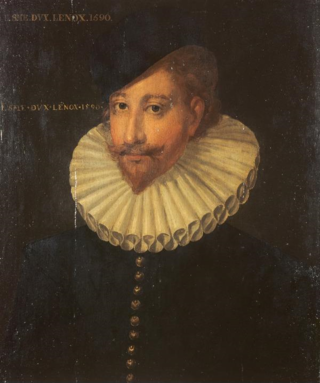Related Research Articles

Karl Heinrich Ulrichs was a German lawyer, jurist, journalist, and writer. He is today regarded as a pioneer of sexology and the modern gay rights movement. Ulrichs has been described as the "first gay man in world history", despite the fact that homosexuality was recorded since c. 9,600 BCE.
Molly house or molly-house was a term used in 18th- and 19th-century Britain for a meeting place for homosexual men and gender-nonconforming people. The meeting places were generally taverns, public houses, coffeehouses or even private rooms where patrons could either socialise or meet possible sexual partners.

The following is the timeline of lesbian, gay, bisexual, transgender, and queer (LGBTQ) people's history.

Silves is a city and municipality in the Portuguese region of Algarve, in southern Portugal. The population of the entire municipality of Silves in 2011 was 37,126, in an area of 680.06 km2. The urbanized area of the city proper has approximately 11,000 inhabitants. Silves is the former capital of the Kingdom of the Algarve (1249–1910), a nominal kingdom within the Kingdom of Portugal (1139–1910), and is of great historical importance.

LGBTQ history dates back to the first recorded instances of same-sex love, diverse gender identities, and sexualities in ancient civilizations, involving the history of lesbian, gay, bisexual, transgender, and queer (LGBTQ) peoples and cultures around the world. What survives after many centuries of persecution—resulting in shame, suppression, and secrecy—has only in more recent decades been pursued and interwoven into more mainstream historical narratives.

Homoeroticism is sexual attraction between members of the same sex, including both male–male and female–female attraction. The concept differs from the concept of homosexuality: it refers specifically to the desire itself, which can be temporary, whereas "homosexuality" implies a more permanent state of identity or sexual orientation. It has been depicted or manifested throughout the history of the visual arts and literature and can also be found in performative forms; from theatre to the theatricality of uniformed movements. According to the Oxford English Dictionary, it is "pertaining to or characterized by a tendency for erotic emotions to be centered on a person of the same sex; or pertaining to a homo-erotic person."

Terms used to describe homosexuality have gone through many changes since the emergence of the first terms in the mid-19th century. In English, some terms in widespread use have been sodomite, Achillean, Sapphic, Uranian, homophile, lesbian, gay, effeminate, queer, homoaffective, and same-gender attracted. Some of these words are specific to women, some to men, and some can be used of either. Gay people may also be identified under the umbrella term LGBT.

A romantic friendship, passionate friendship, or affectionate friendship is a very close but typically non-sexual relationship between friends, often involving a degree of physical closeness beyond that which is common in contemporary Western societies. It may include, for example, holding hands, cuddling, hugging, kissing, giving massages, or sharing a bed, without sexual intercourse or other sexual expression.

Lesbianism is the sexual and romantic desire between women. There are historically fewer mentions of lesbianism than male homosexuality, due to many historical writings and records focusing primarily on men.

Rictor Norton is an American writer on literary and cultural history, particularly queer history. He is based in London, England.

From the age of thirteen until his death, the life of King James VI of Scotland and I of England (1566–1625) was characterised by close relationships with a series of male favourites.

Portuguese Gothic architecture is the architectural style prevalent in Portugal in the Late Middle Ages. As in other parts of Europe, Gothic style slowly replaced Romanesque architecture in the period between the late 12th and the 13th century. Between the late 15th and early 16th century, Gothic was replaced by Renaissance architecture through an intermediate style called Manueline.

The Silves Cathedral is a former cathedral in the city of Silves, in the Algarve region of southern Portugal. A mosque, built during the Moorish rule of the Iberian Peninsula, was originally located in its current place, and was later mostly restructured and converted into a Catholic cathedral after the Reconquista. Although having some Baroque characteristics, it is mostly Gothic in nature and it is considered to be the main Gothic monument in the Algarve and one of the most important landmarks in southern Portugal. It was classified as a national monument on June 29, 1922.
Love Won Out was an ex-gay ministry launched in 1998 by Focus on the Family, an American conservative Christian organization. It was taken over by Exodus International in 2009 and then shut down at the same time Exodus International was disbanded, in 2013.

Some evidence for homosexual behavior in pre-Columbian Peru has survived since the Spanish conquest of Peru in the form of erotic ceramics. Such pottery originated from several ancient civilizations of Peru, the most famous of these being the Moche and Chimu cultures.

Sodomy, also called buggery in British English, generally refers to either anal sex between people, or any sexual activity between a human and another animal (bestiality). It may also mean any non-procreative sexual activity. Originally the term sodomy, which is derived from the story of Sodom and Gomorrah in the Book of Genesis, was commonly restricted to homosexual anal sex. Sodomy laws in many countries criminalized the behavior. In the Western world, many of these laws have been overturned or are routinely not enforced. A person who practices sodomy is sometimes referred to as a sodomite, a pejorative term.
There are a number of passages in the Hebrew Bible that have been interpreted as involving same-sex sexual acts, desires, and relationships. The passages about homosexual individuals and sexual relations in the Hebrew Bible are found primarily in the Torah and have been interpreted as referring primarily to male homosexual individuals and sexual practices.
The study of homosexuality and LGBTQ people in Mexico can be divided into three separate periods, coinciding with the three main periods of Mexican history: pre-Columbian, colonial, and post-independence, in spite of the fact that the rejection of LGBTQ identities forms a connecting thread that crosses the three periods.

LGBTQ people are well documented in various artworks and literary works of Ancient India, with evidence that homosexuality and transsexuality were accepted by the major dharmic religions. Hinduism and the various religions derived from it were not homophobic and evidence suggests that homosexuality thrived in ancient India until the medieval period. Hinduism describes a third gender that is equal to other genders and documentation of the third gender are found in ancient Hindu and Buddhist medical texts. The term "third gender" is sometimes viewed as a specifically South Asian term, and this third gender is also found throughout South Asia and East Asia.
The Christian tradition has generally proscribed any and all noncoital genital activities, whether engaged in by couples or individuals, regardless of whether they were of the same or different sex. The position of the Roman Catholic Church with regards to homosexuality developed from the writings of Paul the Apostle and the teachings of the Church Fathers. These were in stark contrast to contemporary Greek and Roman attitudes towards same-sex relations which were more relaxed.
References
- ↑ "15 Gay Romances of the Renaissance Era". The Advocate (LGBT magazine). October 21, 2016.
- ↑ Mott, L.; Assunção, A. (May 8, 1988). "Love's labors lost: five letters from a seventeenth-century Portuguese sodomite". Journal of Homosexuality. 16 (1–2): 91–101. doi:10.1300/J082v16n01_05. PMID 3069932.
- ↑ "Matt & Andrej Koymasky - Famous GLTB - Francisco Correa Netto". andrejkoymasky.com.